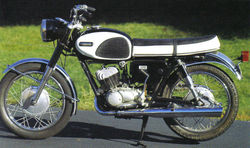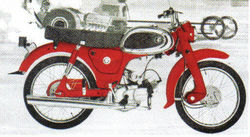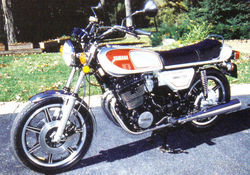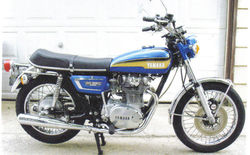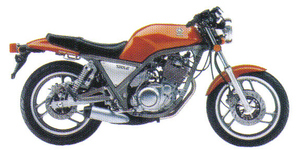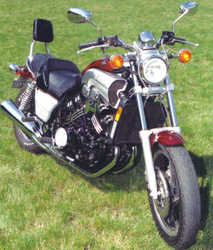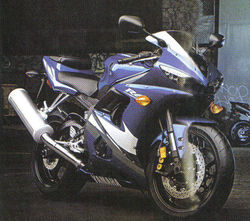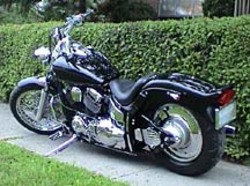The Honda, Yamaha Page:
Honda will not be covered on this site because their motorcycles are covered on the three sites listed below. Just click on either one of the links provided below and see the material for Honda motorcycles:
www.markbayersvintagehonda.mysite.com
www.hondaenthusiasts.mysite.com
www.motorera.com/honda/index.htm
Honda has been one of the most significant motorcycle manufacturers in the world of motorcycling. After reviewing the above sites, move on the Yamaha.
_______________________________________________________________________________
Yamaha Motorcycles: A review of significant Yamaha's;
Yamaha Industries followed other Japanese corporations into the motorcycle business because of their desire to expand their business through the use of their surplus foundry capacity. Their main products were musical instruments, hence the tuning iron as their logo symbol. Starting in 1954, Yamaha copied the German DKW Rt125 as a base model. The DKW had been copied by numerous other companies such as Harley Davidson and BSA. The 250cc series Yamaha's were copied from the German Adler MB200/250 series as did other Japanese companies. All of the early Yamaha's were 2 strokes. The first 4 stroke was the 1970 XS-1, a refined copy of the Triumph Bonneville. Yamaha began racing their motorcycles in the mid 1960's and has become one of the most significant racing brands. Their sport bikes and dirt bikes are major winners even today! Their water cooled TR and TZ series 2 strokes were world dominators till 2-strokes were eliminated because of anti-pollution laws. Eric Buell, founder of Buell motorcycles started his racing career on a Yamaha powered racer. Yamaha did as other Japanese companies did, copied previous designs, perfected them, then made their own technically advanced designs. Yamaha has been a serious "market oriented" company which has built a reputation for having a wide range of models which are reliable, fast, advanced, and competitive in the market.
Below is a 1966 YDS2 250cc twin:
The Yamaha YDS series was to become one of the great Japanese motorcycles. Many a biker would make fun of the whing-ding sound of the exhaust, but would back down from a race. The 350cc series (YR 1 in 1967) was to become a super fast bike even winning the Daytona race against 4 stroke 750's.
Below is an example of an early Yamaha MJ2 2-stroke:
This little 55cc single was also available in an 80cc version. The most popular Yamaha's in the early years (1961-1965) were 125cc machines or smaller. From the beginning, they offered a 250cc twin, but few were seen till after 1965. After the mid 1960's sales of their YDS series (250cc) grew faster because the bikes were really fast for their size. A Japanese 250cc 2-stroke (Yamaha, Suzuki, or Kawasaki) could beat many British 500's. A Japanese 250 with a tuned expansion chamber could humble a Harley Davidson Sportster or British 650 to around 80mph.
A 1978 XS 750 is shown below:
The new series 4-stroke engines produced after the XS-1 (650 vertical twin) were known as really good, sturdy engines. Starting with air cooling, then water cooling, the Yamaha engines built quite a reputation for reliable service. The TX series (500/650/750cc twins) engines were followed by the SX 750 tripple and SX1100 fours. The XJ series started in 1982.
The SX-1 was offered in 1970, the SX-2 (disc brake) was offered in 1972:
The Triumph Bonneville inspired XS series was Yamaha's first attempt at a big 4-stroke. They were very reliable and have become very collectable. They were to become competitive flat trackers and great bikes to customize!
